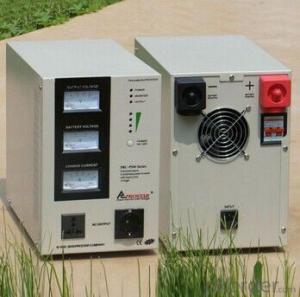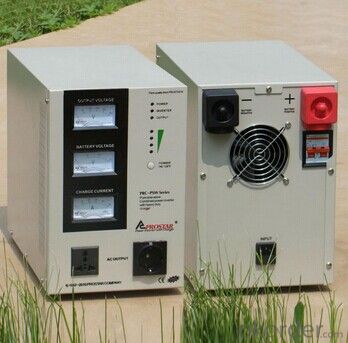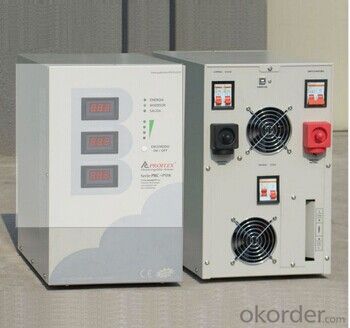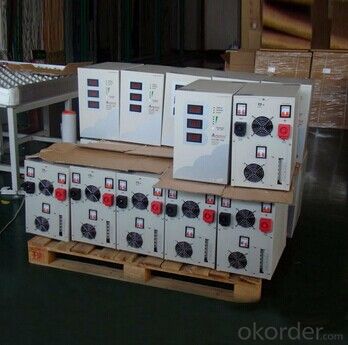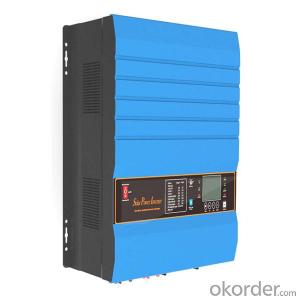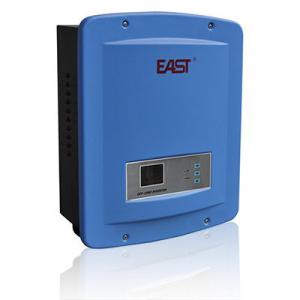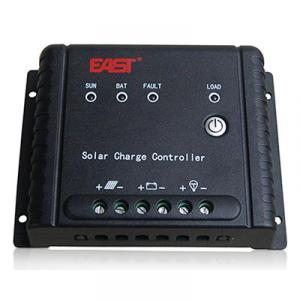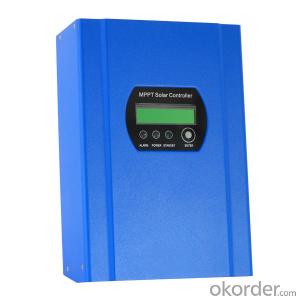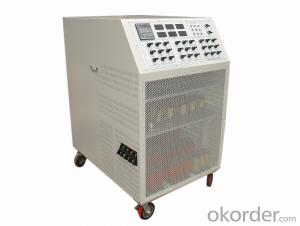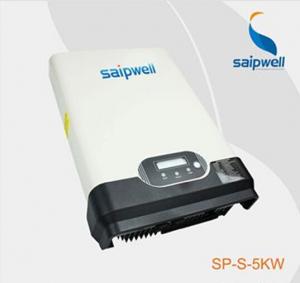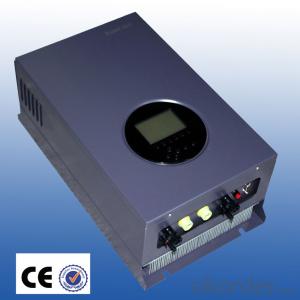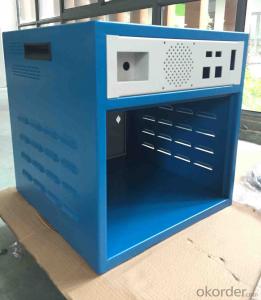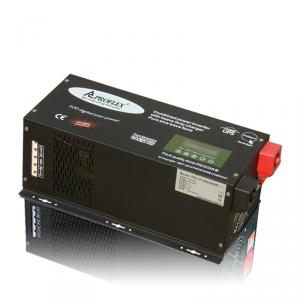Best 12V Solar Inverter Sine Wave Charger with Manual Bypass 5kW
- Loading Port:
- Tianjin
- Payment Terms:
- TT OR LC
- Min Order Qty:
- 10 pc
- Supply Capability:
- 10000 pc/month
OKorder Service Pledge
OKorder Financial Service
You Might Also Like
Specifications
Inverter sine wave charger
with AC input / output breaker
with Battery switch (breaker)
with manual bypass breaker
Automatic
5kW Inverter sine wave charger with manual bypass
Analogue meter display & digital meter display optional
Advantages
> Ultra-fast transfer time
From AC to DC less than 5ms, From DC to AC 0ms
(Routers, Switches PC, Servers and ATM machine will never re-start at Mains failure)
> Faster battery recharge time (Big charge current 30A~50A)
> Automatic tracking mains or generator input (Tracking input voltage, phase & frequency)
> AC / DC conversion waveform (Seamless connection without any spike)
> Battery equalization system (for longer battery life)
> Protection against short-circuit, low voltage, overload, over temperature and over-charge
> Low maintenance cost, Analogue meter & Digital meter Optional
Application range
Computer, Telecom, Deep Freezers, Air Conditioners, Petrol pump machines, Small Scale Industries Malls, Hotels, Restaurants, Banks, ATM Machines, Clinics, All kinds of Kitchen appliances & Home appliances, Weighing bridges,Elevators etc.
Technical specifications
| PRC-PSW SERIES | 500VA | 1000VA | 1500VA | 2000VA | 3000VA | 4000VA | 5000VA | 6250VA |
| BATTERY DC VOLTAGE | 12V | 12V/24V | 24V/48V | |||||
| INPUT AC RANGE | 160~280V / 45~55Hz | 165~260V / 45~55Hz | ||||||
| INVERTER OUTPUT | 220V ± 10% / 50Hz ± 1% | |||||||
| TRANSFER (AC LOSS) | 5ms after AC loss, automatic recovery after utility power back | |||||||
| FULL LOAD CAPACITY | 400W | 800W | 1200W | 1600W | 2400W | 3200W | 4000W | 5000W |
| WAVE DISTORTION | THD < 3% | |||||||
| OVER LOAD CAPACITY | 100% ~ 125% Keep Beeping; > 125% working 30s; >150% 1s shut down | |||||||
| OUTPUT SOCKET | 2outlets | 1outlet + terminal connectors | ||||||
| INDICATOR STATUS | Utility input with "POWER" & "BYPASS" light on | |||||||
| Utility power loss with "INVERTER" light on | ||||||||
| Connected with load "AC OUTPUT" light on | ||||||||
| Warning for battery low & over load with " ! " flashing | ||||||||
| Battery low protection, over load protection, short circuit protection with " ! " light on | ||||||||
| BATTERY CAPACITY | From top to bottom 4 indicator means 100%, 75%, 50%, 25% (" ! "Flashing) | |||||||
| CHARGE STATUS | Indicator flash change from 50% →75% → 100% every 1second means "CONSTANT CURRENT" | |||||||
| Indicator flash change from 50% →75% → 100% every 2second means "CONSTANT VOLTAGE" | ||||||||
| Indicator 50%/75%/100% 3lights on means "FLOAT CHARGE" & battery full | ||||||||
| CHARGE CURRENT | 15A | 20A | 30A/20A | 50A/30A | 70A/50A | |||
| Meter Display (OPTIONAL) | Analogue meter or Digital meter | |||||||
| RECHARGE TIME | 8~10hours | |||||||
| POWER EFFICIENCY | 80% at full load | 75% at full load | ||||||
| NOISE CONDITION | < 45dB | |||||||
| TEMPERATURE | —10°C ~ 40°C (Operation environment); —20°C ~ 50°C (Stock environment) | |||||||
| HUMIDITY | 0~95% no condensation | |||||||
| SIZE OF INVERTER | 420 x 230 x 350 mm | 500 x 280 x 430 mm | ||||||
| MEAS. AFTER PACKING | 45x26x38cm / unit | 53x31x46cm / unit | ||||||
| TYPE OF PACKAGING | Honeycomb carton | |||||||
| WEIGHT OF INVERTER | 11kg | 13kg | 16kg | 27kg | 29kg | 36kg | 38kg | 44kg |
| WEIGHT AFTER PACKAGING | 13kg | 15kg | 18kg | 29kg | 31kg | 38kg | 40kg | |

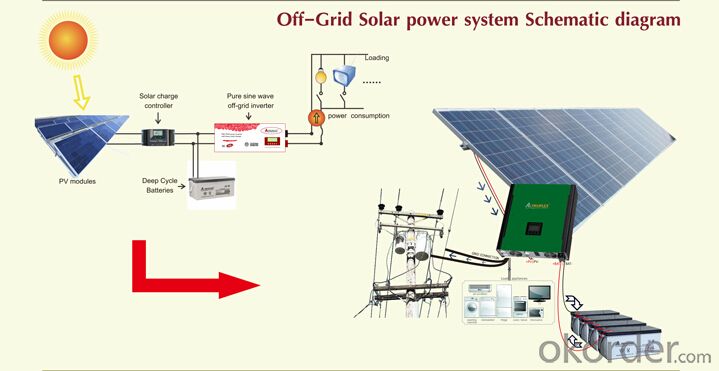
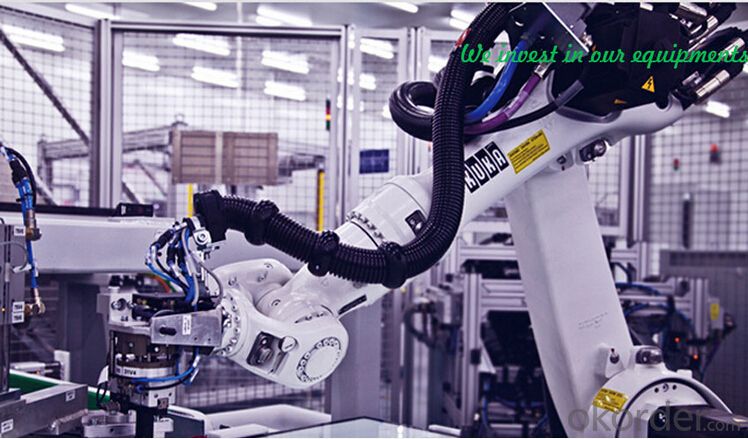
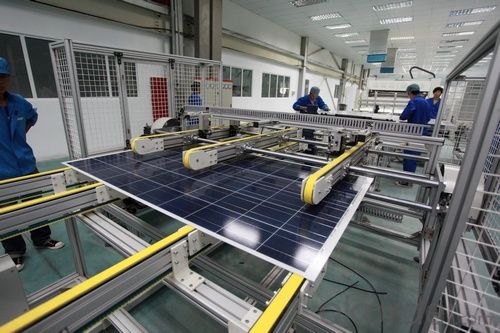
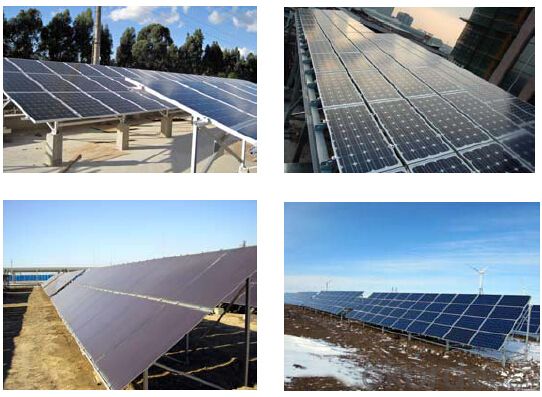
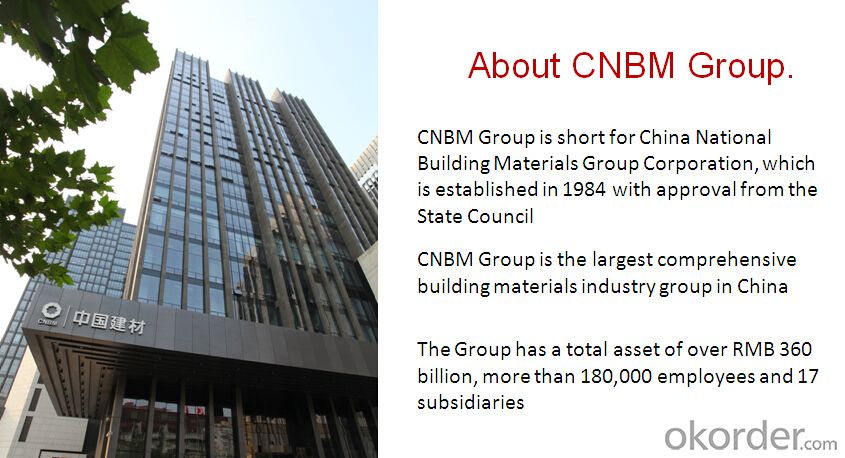

- Q: What is the typical installation process for a solar inverter?
- The typical installation process for a solar inverter involves several steps. First, the inverter is mounted in a suitable location, usually close to the solar panels and near the electrical service panel. Then, the DC input wires from the solar panels are connected to the DC input terminals on the inverter. The AC output terminals of the inverter are then connected to the electrical service panel, allowing the generated electricity to be fed into the grid or used by the household. Finally, the inverter is connected to a monitoring system, which enables the user to track the performance and energy production of the solar system. It is important to note that the installation process may vary depending on the specific inverter model and the local electrical codes and regulations.
- Q: What is the role of a solar inverter in voltage support?
- The role of a solar inverter in voltage support is to convert the direct current (DC) produced by solar panels into alternating current (AC) that can be used by the electrical grid. Additionally, it helps regulate and stabilize the voltage levels, ensuring that the electricity generated from solar power is compatible with the grid's voltage requirements.
- Q: How do you connect a solar inverter to the electrical grid?
- To connect a solar inverter to the electrical grid, you typically follow these steps: 1. Install the solar panels: First, mount the solar panels on the roof or another suitable location to capture sunlight and generate DC (direct current) electricity. 2. Connect the solar panels to the inverter: Use appropriate wiring and connectors to connect the DC output of the solar panels to the input terminals of the solar inverter. 3. Install a suitable breaker: Install a dedicated circuit breaker between the inverter and the electrical panel to protect against electrical faults and overloads. 4. Connect the inverter to the electrical panel: Use appropriate wiring and connectors to connect the AC (alternating current) output of the inverter to the electrical panel. 5. Obtain necessary permits and inspections: Check with your local authorities to ensure compliance with regulations and obtain any required permits. Arrange for inspections to ensure the installation meets safety standards. 6. Activate the inverter: Follow the manufacturer's instructions to activate and configure the inverter according to your system specifications. 7. Connect to the electrical grid: If permitted in your area, arrange for a licensed electrician or utility company to connect the inverter to the electrical grid. This step may involve installing a bi-directional meter and completing paperwork. Once connected, the solar inverter converts the DC electricity generated by the solar panels into AC electricity suitable for use in your home or to feed excess power back into the grid.
- Q: Can a solar inverter be used with a solar-powered outdoor lighting system?
- Yes, a solar inverter can be used with a solar-powered outdoor lighting system. A solar inverter is responsible for converting the direct current (DC) generated by solar panels into alternating current (AC) that can be used to power various devices, including outdoor lighting systems. By connecting the solar panels to a solar inverter, the generated energy can be efficiently transformed and utilized for powering the lighting system, ensuring sustainable and renewable lighting solutions.
- Q: How does a solar inverter handle different temperature conditions?
- A solar inverter is designed to handle different temperature conditions by incorporating various features and mechanisms. Firstly, it is equipped with a temperature sensor that continuously monitors the inverter's internal temperature. If the temperature exceeds a certain threshold, the inverter activates cooling mechanisms such as fans or heatsinks to dissipate the heat and prevent overheating. Additionally, the inverter's components are selected and designed to withstand a wide range of temperatures, ensuring their functionality and longevity even in extreme conditions. Furthermore, modern inverters often have built-in protective measures like thermal derating, which reduces the inverter's power output as the temperature rises, ensuring it operates within safe limits. Overall, solar inverters are engineered to adapt and operate efficiently in varying temperature conditions for optimal performance and reliability.
- Q: What is the role of a solar inverter in voltage control?
- The role of a solar inverter in voltage control is to convert the direct current (DC) electricity generated by solar panels into alternating current (AC) electricity that is suitable for use in homes and businesses. Additionally, the solar inverter helps regulate the voltage levels of the AC electricity to ensure it is stable and compatible with the electrical grid.
- Q: What is the role of a voltage control unit in a solar inverter?
- The role of a voltage control unit in a solar inverter is to regulate and stabilize the voltage of the direct current (DC) power generated by the solar panels before it is converted into alternating current (AC) power. It ensures that the voltage remains within the desired range to optimize the efficiency and performance of the solar inverter, as well as protect the connected appliances or grid from potential damage due to voltage fluctuations.
- Q: How does a solar inverter handle reactive power injection into the grid?
- A solar inverter manages reactive power injection into the grid through the use of power factor control techniques. It adjusts the phase relationship between the voltage and current to ensure that the power factor remains within acceptable limits. This is achieved by either absorbing or injecting reactive power as needed, helping to stabilize the grid and improve overall system efficiency.
- Q: How does a solar inverter handle voltage dip and interruption?
- A solar inverter handles voltage dip and interruption by continuously monitoring the incoming grid voltage. In case of a voltage dip, it utilizes its internal control mechanisms to stabilize and regulate the output voltage, ensuring a consistent power supply to the connected solar panels. In the event of a complete interruption of grid power, the inverter quickly switches to an off-grid mode, where it utilizes the solar energy stored in batteries (if available) to continue powering the connected loads. This way, it effectively mitigates the impact of voltage fluctuations and interruptions, ensuring uninterrupted power supply from the solar panels.
- Q: What is the role of isolation in a solar inverter?
- The role of isolation in a solar inverter is to provide safety and protect the user from electrical shocks. It separates the input and output sides of the inverter, ensuring that any faults or disturbances on one side do not affect the other. Isolation also helps to minimize electrical noise and interference, improving the overall performance and reliability of the solar inverter.
Send your message to us
Best 12V Solar Inverter Sine Wave Charger with Manual Bypass 5kW
- Loading Port:
- Tianjin
- Payment Terms:
- TT OR LC
- Min Order Qty:
- 10 pc
- Supply Capability:
- 10000 pc/month
OKorder Service Pledge
OKorder Financial Service
Similar products
Hot products
Hot Searches
Related keywords
